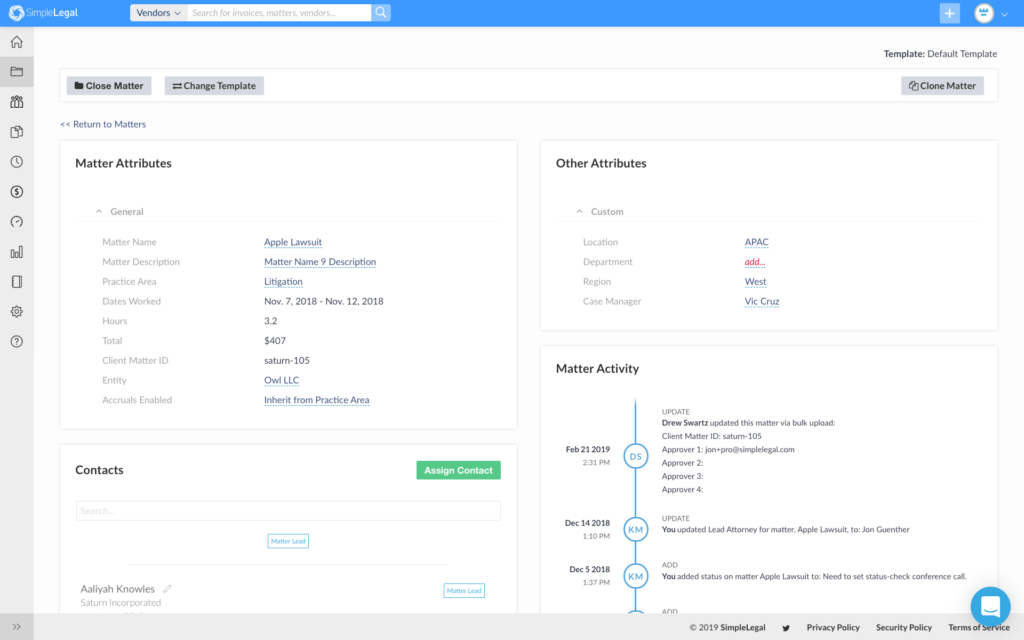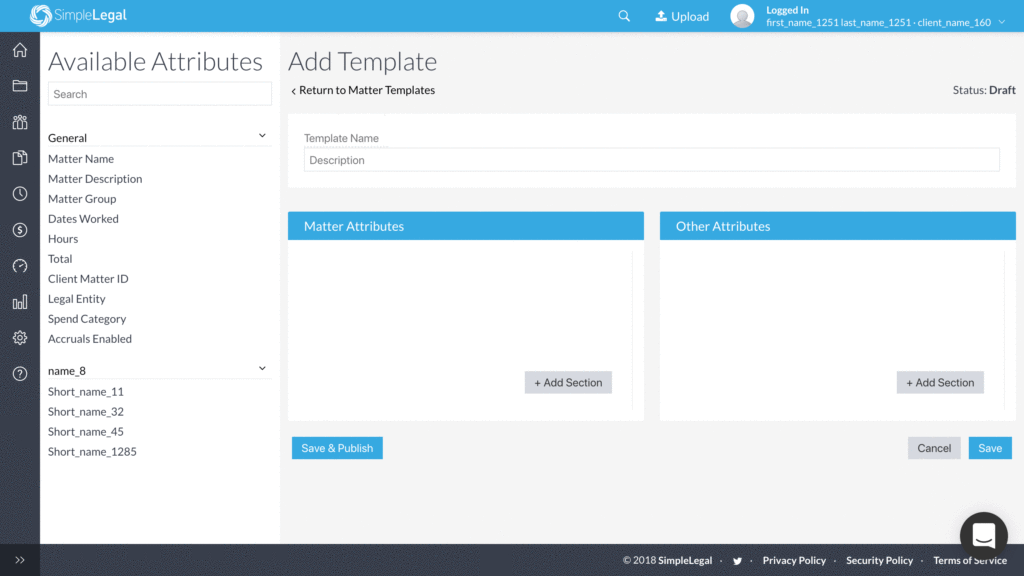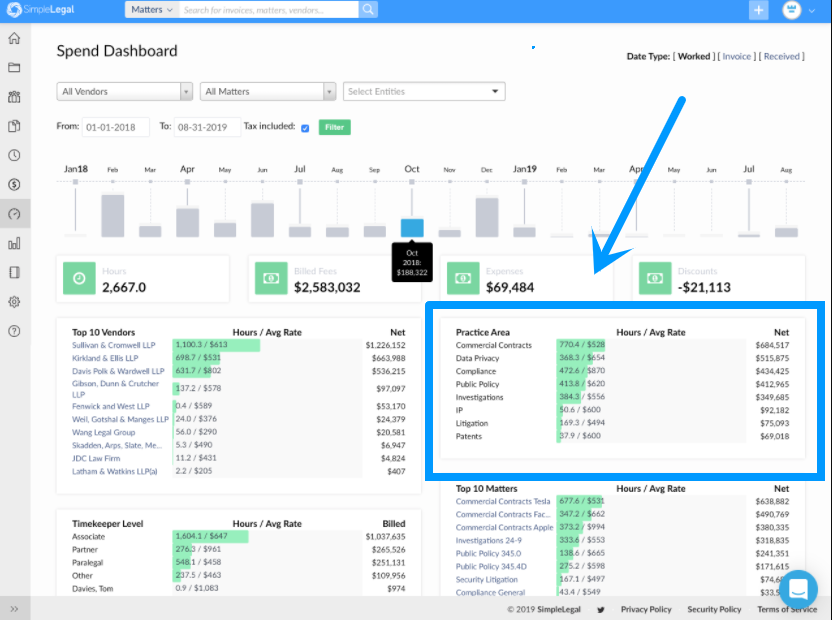4 legal metrics that emphasize your legal department’s value to stakeholders

The legal department adds value to corporations. But that’s hard to prove when legal departments don’t directly generate revenue. Instead, legal invoices run into millions of dollars annually—$5,794,148 on average in 2019, according to an Association of Corporate Counsel (ACC) report. That’s why you need to track and report on legal metrics—to be able to prove your value.
Most resources that tell you what to track to prove your value focus largely on the more obvious legal spend metrics like cost per matter and outside counsel spend. But when you track and report on only those spend metrics, you further position your legal department as a cost center instead of the strategic business partner that it is. So how do you position yourself as a strategic business partner?
If you don’t already, start tracking metrics like matters handled, spend by practice area, spend as a percentage of revenue, and discounts and alternative fee arrangements. These metrics don’t show only how much your legal department spends; they also show how much revenue and savings the legal team has helped the business generate.
Matters handled
Matters handled are the number of legal projects your department started and closed for the company within a given period. Matters include everything from the litigations, arbitrations, and employment matters you handled to regulatory matters, franchise deals, and mergers and acquisitions for your company.
You need to track matters handled, the average cycle time of those matters, and the impact or potential loss—or result—that would have come if the matters weren’t handled properly. That way, you will be able to demonstrate the cost-benefit for the company—not just the cost. For example, in the case of signing a new franchise deal, this metric can be a direct indicator of revenue your department helped the company generate. In the case of arbitrations, you show stakeholders how much legal work your department does to resolve disputes and prevent damages.
The first line of thought for general counsels and corporate legal departments will often be to track legal matters with a manual system (looking at your spreadsheets and databases). But those are inefficient, and they also often spread across multiple systems and, therefore, only give partial views of matters.
To track matters handled more efficiently, use a matter management solution like SimpleLegal (that’s us 👋) where you can capture every detail about matters.

You’ll be able to standardize matter intake, add approval workflows to your matters, and track and report on different custom attributes. And you can get started in a few clicks with a custom matter template like this:

Manage matters with a solution like SimpleLegal to be able to track the people, documents, and all the details of both internal and external matters from a centralized database. That way, it’s easy to report on matters handled to stakeholders.
Spend by practice area
Spend by practice area is the measure of how many resources different areas of legal work for your company take up (i.e., how much time, money, and effort you spend in areas like employment, intellectual property, contracts, litigation, and so on).
You need to track and analyze spend by practice area because it shows stakeholders the type of work happening and available opportunities to reduce costs. For example, from analyzing your spend by practice area, you may find that your company has to constantly hire outside counsels for litigations. With this insight, you’ll be able to advise stakeholders that spending more money upfront on in-house counsel to handle litigations is smarter in the long run.
The most efficient way to track spend by practice area is with SimpleLegal’s spend management solution.
SimpleLegal integrates with your accounts payable systems so you can automatically log spend, enforce billing guidelines, perform spend analysis, and more. You get dashboards for specific spend groups (spend by practice area, in this case) in addition to a general spend dashboard where you can view spend grouped by vendors, matters, and practice area, among others.

SimpleLegal gives you a clearer view into your spend by practice area so that you can share data-driven suggestions with shareholders and demonstrate your value to them.
Spend as a percentage of revenue
Spend as a percentage of revenue is the percentage of the actual amount spent on legal work when compared to a business’s total generated revenue.
The average spend as a percentage of company revenue as of 2019 was 0.44%, according to CLOC. You need to track your spend as a percentage of revenue—especially if your actual spend is growing—to show that legal costs aren’t merely rising. By representing spend relative to revenue as opposed to spend alone, you’ll be able to show that spend is growing on par or even slowing down year-over-year relative to revenue.
Spend as a percentage of revenue is calculated as X = S(100)/R (spend multiplied by a hundred, divided by revenue).
So if your legal department’s budget was $2,000,000 for a year where your company generated $2,000,000,000, your spend as a percentage of revenue would be 0.1%.
SimpleLegal’s spend management solution will help you track and monitor spend so you can start benchmarking it against revenue and show how spend percentages have dropped (or risen) year over year.
AFAs and discounts on outside counsel rates
Alternative fee arrangements (AFAs) and discounts on outside counsel rates are the amounts you successfully negotiate and pay vendors in place of the standard rate. Even though billable hours are the standard, many companies are shifting over to AFAs because it’s a payment based on value delivered—not time spent—on a project. If your law firms bill per hour, you pay based on time spent performing tasks rather than value received. And hours can vary widely, even for the same task.
You need to track AFAs and discounts because they let you show stakeholders that you are controlling outside counsel costs without sacrificing quality.
The best way to track AFAs and discounts is with SimpleLegal’s e-Billing solution. Our solution doesn’t only track AFAs; it enforces them with an intelligent invoice workflow that ensures that billing guidelines, discounts, and AFAs are strictly followed.
The legal department adds value to corporations. But that’s hard to prove when legal departments don’t directly generate revenue. Instead, legal invoices run into millions of dollars annually—$5,794,148 on average in 2019, according to an Association of Corporate Counsel (ACC) report. That’s why you need to track and report on legal metrics—to be able to prove your value.
Emphasize your value
Legal departments are a strategic business partner. Don’t let the legal spend deter you from proving and emphasizing your value to your company- whether it be through matters managed, discounts and AFAs, etc. To learn more about how to position the legal team as a valuable asset, our legal ops success kit has all the resources you need to succeed.


